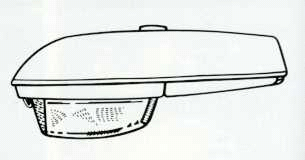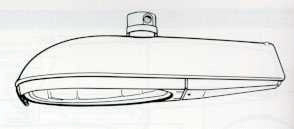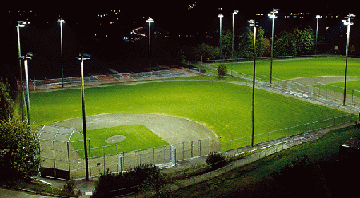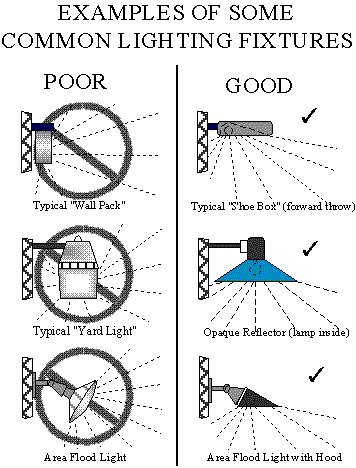



Back to Saving Maui's Starry Night Skies
July 2, 1997
Councilmember J. Kalani English
200 South High Street
Wailuku, HI 96793
fax: (808) 243-7117
Re: Reclaiming Maui's starry nights
Dear Councilmember English:
When I first moved to Oahu from North Carolina three years ago, I remembered the words of an old Chapel Hill man who had been stationed in Honolulu during the War. When I told him I was moving to Hawaii, he said, "Oh, the stars! The stars are incredible in Hawaii."
Well, when I got to Oahu, there weren't many stars to be seen. And the same goes for a growing portion of Maui because the night skies are lit up by streetlights. This matter grabbed my attention recently when I was driving down from Upcountry at night, and the carpet of lights in Kahului reminded me exactly of Southern California where I grew up, which was a sickening thought---because of what I saw that came with the spread of those lights---the paving of farmland, the mushrooming of indistinguishable parking lots, housing tracts, malls and office parks, the alienated spirit that this creates, the traffic congestion, long commutes, social isolation, and crime.
These larger social issues are beyond the scope of my letter, but the lights themselves present a simple picture of a problem and its solution. The design of these streetlights causes much of the light to be cast up into the sky. So when you look out over Maui at night now, you see an orange glow above Kahului and Kihei from streetlights. Upcountry glows brighter every year with its growing lacework of lights. Few stars can penetrate the illuminated skies. For most people living on Maui, seeing the starry night skies now requires driving to less developed parts of the island. This is a terrible loss to a place whose beauty is the foundation of its economy.
Is the orange glow of urban skies a necessary part of "progress", or an avoidable mistake? Is it necessary that streetlights cast light upward for their function? I couldn't see how. It seemed to be another case of poor design degrading the quality of life.
I searched the Web to see who else might have had similar concerns, and found out that not only were there activists working on light pollution, but that simple solutions already existed. The U.S. wastes some $1.5 billion in electricity a year illuminating its skies with poorly designed streetlights. The solution is "full-cutoff" streetlight fixtures, where the light is cast only downward, not upward or sideways. Full-cutoff streetlight fixtures allow the wattage to be reduced by 33% because the light that would go toward the sky is reflected downward, and the energy savings typically pay for retrofitting costs in three years. The payback time on Maui would probably be only two years because electricity rates are so high.
Thus if two years ago (when I first got here) the County had retrofitted its streetlights from the current "cobra head" design to a "full-cutoff" design , by now the County would be making money on the deal, and all of Maui would have its starry skies back. If Kahului and Wailuku were retrofit to full-cutoff street lights, the towns would essentially disappear to Upcountry residents at night. Instead of the current sprawl of lights looking like Los Angeles and the skies glowing orange, there would be only faint glows on the ground, and dark star filled skies above. The ideal shielding, if it could be purchased, would hide the street lights for greater than the top 180 degrees, so that the Upcountry street lights would be invisible from the valley. Then Haleakala would appear pristine at night, instead of showing the growing web of development that it does now. Such retrofitting would enhance the beauty and appeal of Maui to visitors.
Fortunately, most of the private sector outdoor lights on Maui use full-cutoff light fixtures. Some good examples are the Azeka Plaza parking lot, and the parking lot of Kamali`i School on Kanakanui in Kihei. Full-cutoff streetlights can be seen on Lipoa Parkway at the Maui Research and Technology Park. The main offenders causing the glow above the towns are the public streetlights and night lights on athletic fields.
Light pollution is a worldwide problem, and there are examples of other communities in the US and beyond that are taking legislative action to bring back the starry night skies. In 1992 Maine enacted a statewide light pollution ordinance. Massachusets has the following bill pending (available on the Web at http://cfa-www.harvard.edu/~graff/nelpag/BILL.html), similar to bills pending in many other states have (including Connecticut and Texas):
Section 2.5. No state funds shall be used to install any new permanent outdoor luminaire or to replace an existing permanent outdoor luminaire unless the following conditions are met:
- 1) The new or replacement luminaire is a full-cutoff luminaire when the rated output of the luminaire is greater than 1,800 lumens;
- 2) If a lighting recommendation or regulation applies, the minimum illuminance specified by the recommendation or regulation is used;
- 3) If no lighting recommendation or regulation applies, the minimum illuminance adequate for the intended purpose is used, giving full consideration to energy conservation, glare, and minimizing light trespass;
- 4) For roadway lighting, a determination is made that the purpose of the lighting installation or replacement cannot be achieved by installation of reflectorized roadway markers, lines, warnings or informational signs, or other passive means; and
- 5) Adequate consideration has been given to conserving energy and minimizing glare, light pollution, and light trespass.
Since the County is currently wasting money with its existing streetlights, and wasting money installing more of these offending streetlights, the sooner this problem is dealt with, the cheaper the solutions will be. Therefore I urge you as a County Council member to bring up this issue for quick action. As I come across any more information on ordinances or low cost ways to retrofit existing fixtures, I will send them to you.
Sincerely,
Lee Altenberg, Ph.D.
Research Affiliate, Hawai`i Institute of Geophysics and Planetology, University of Hawai`i at Manoa
Some other Web sites dealing with this issue are are:
Below are some illustrated of the items described in my letter.



